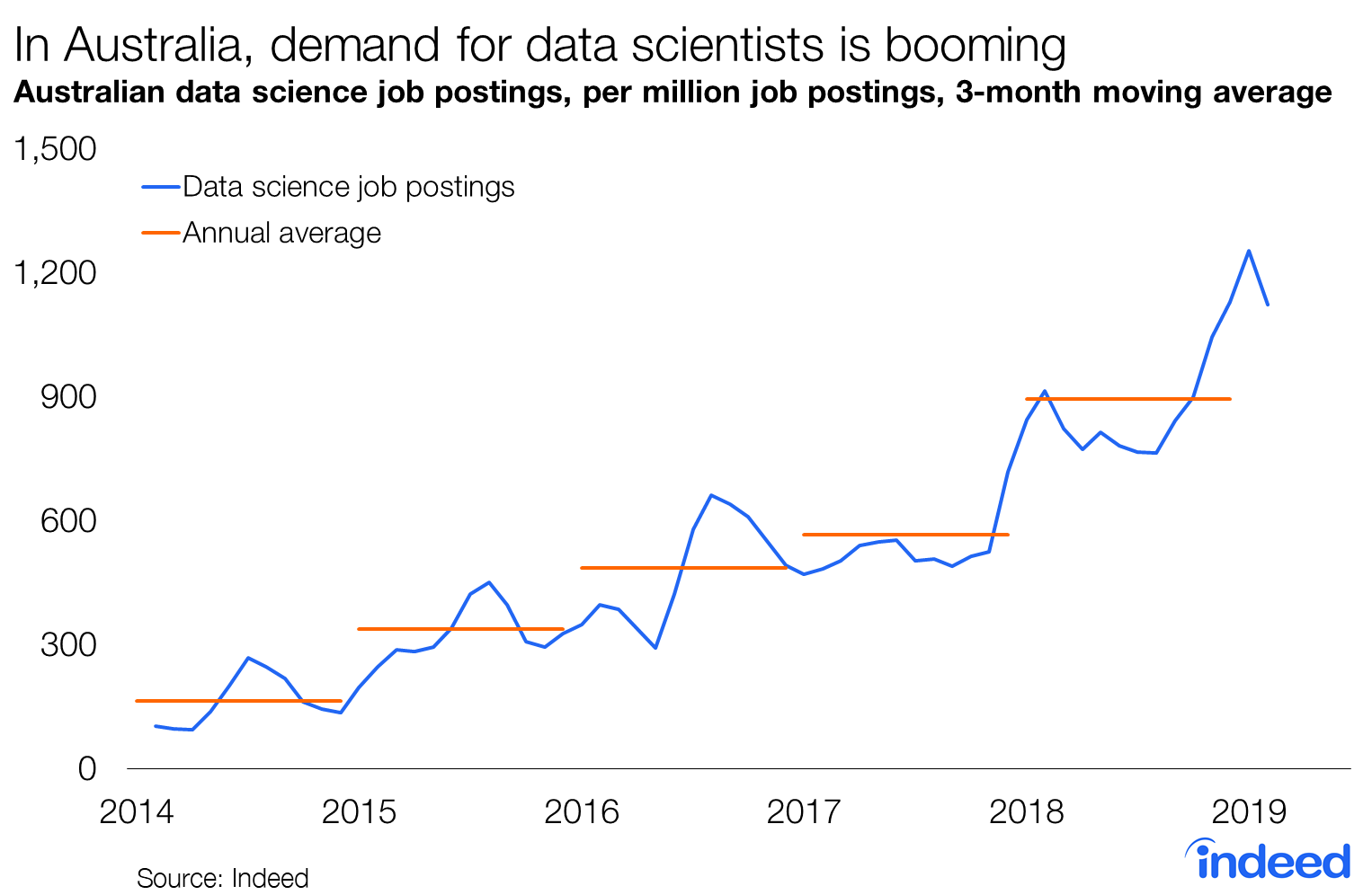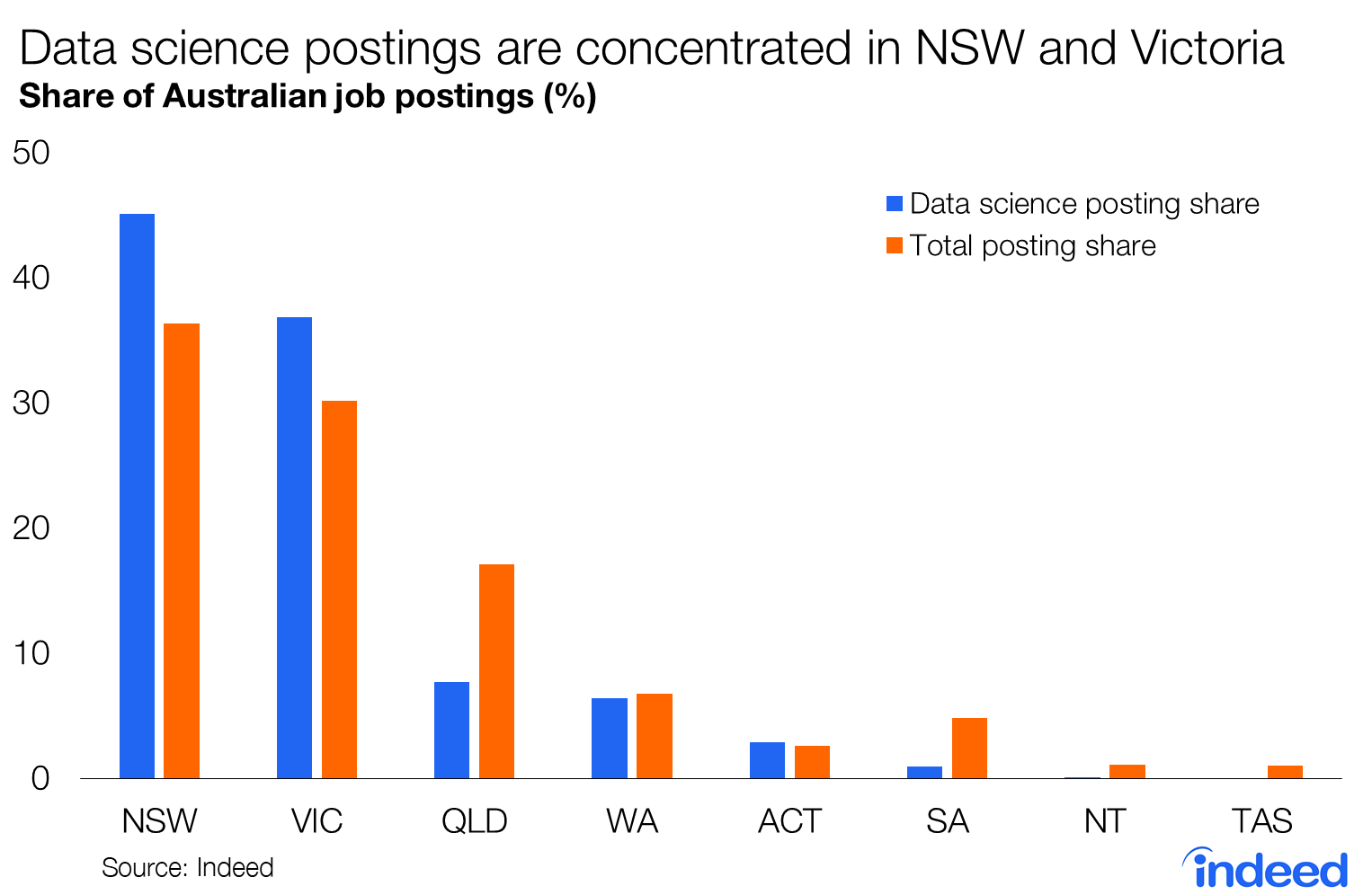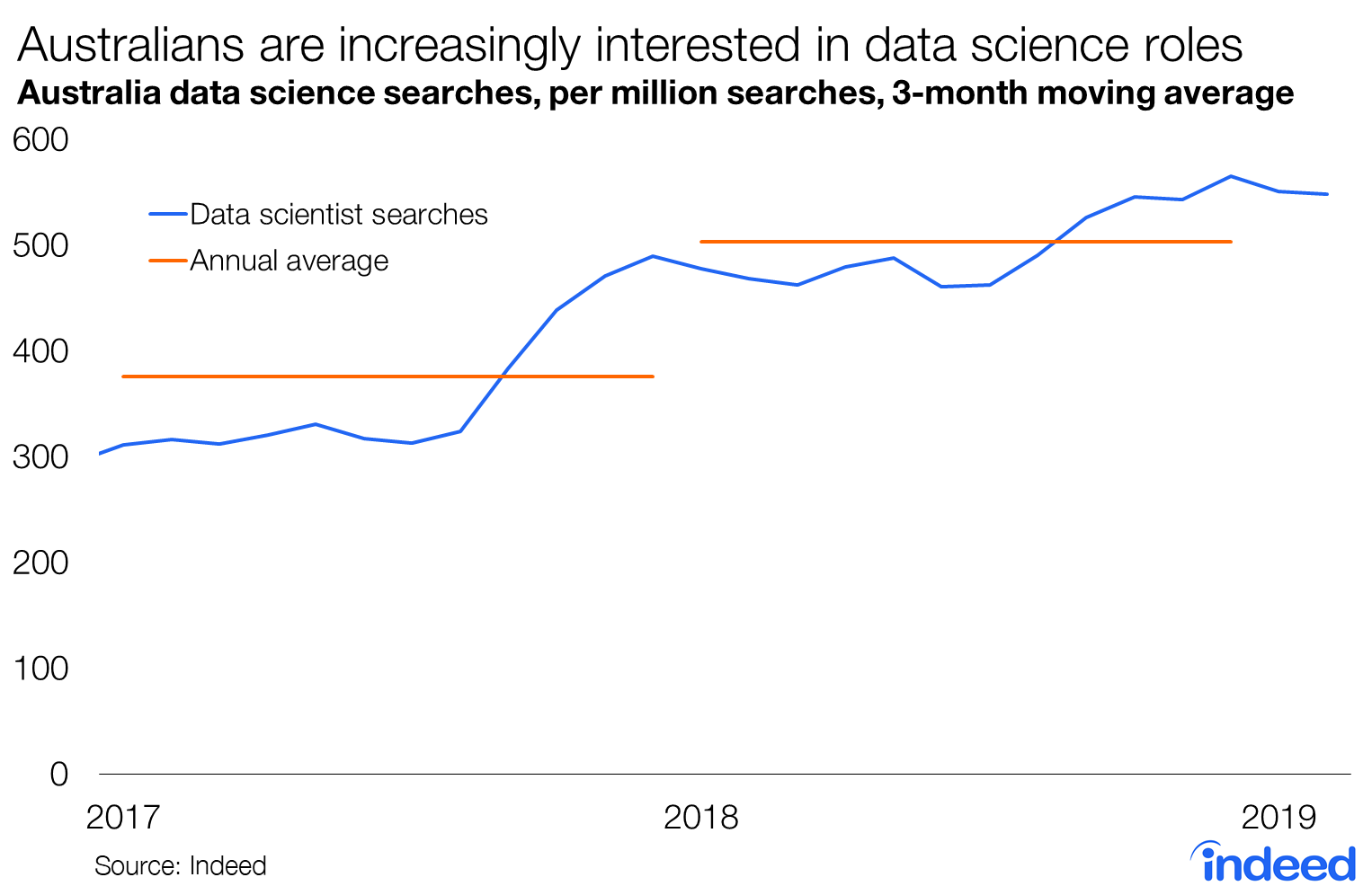Key points:
- Job postings for data scientists increased 58% in 2018 following rapid growth over several years. Four out of five jobs are located in New South Wales and Victoria.
- Search activity has also expanded, reflecting greater job seeker interest, albeit less than the growth of job opportunities.
- Almost 30% of Australian data science job searches come from overseas, compared with 8% of total searches on Australian job postings.
Back in 2012, the Harvard Business Review called data scientist “the sexiest job of the 21st Century.” More than six years later, that job has only gotten sexier. Employers are enamoured with data scientists, and that is reflected in soaring growth of opportunities across Australia. Demand for data scientists appears to have outstripped the supply of qualified applicants.
Data science jobs had increased steadily as a share of Australian job postings and then accelerated throughout 2018. Postings rose 58% in 2018 and are more than five times higher than they were in 2014. Momentum has shown no sign of slowing in early 2019, with postings tracking 30% ahead of the same period last year.

These jobs are typically found in New South Wales and Victoria. The two states accounted for more than four out of five data science job advertisements in 2018, compared with two-thirds of total postings in Australia. Queensland ranked a distant third in data science job opportunities, but positions there are few and far between given the smaller size of the state’s economy. Other states, such as South Australia and Tasmania, along with the Northern Territory, had almost no data science opportunities. This may simply reflect the fact that Sydney and Melbourne are home to most of Australia’s large corporations, which are the main employers of data scientists.

Melbourne’s Swinburne University of Technology is the number one recruiter of data scientists. In the business world, opportunities are in no way limited to traditional tech companies. The list of biggest data scientist employers comprises a range of industries, including banking, mining, telecommunications, and an airline.
The boom in data science roles reflects a broader shift toward digitisation and data analysis, including the use of big data, that has transformed some sectors of the Australian economy. Data scientists are employed to solve all sorts of problems through data analytics, programming, and statistical modelling.
Data scientists are typically fluent in one or more statistical analysis programming languages, with Python and R the favoured skill set. They are in high demand globally and businesses compete fiercely for talent.
The surge in demand for data scientists has not been fully matched by job seeker interest. Searches for data science as a share of total searches rose a very impressive 34% in 2018, but even that strong number was not sufficient to keep pace with postings. As a result, some employers may be struggling to find enough applicants.

In 2018, 30% of data science job searches came from overseas compared with just 8% for all Australian occupations. On the one hand, that is good news for Australian employers. The ability to tap into a global talent pool increases the likelihood of finding applicants with the right skill set. On the other hand, access to global talent may have diminished because of changes to Australia’s skilled visa program despite federal government efforts to encourage tech applications in the program.
What is clear from the data is that demand for data scientists is growing explosively. This is an emerging occupation that pays well and is in high demand globally. In Australia, there is plenty of room for growth. Data scientists are moving from ‘a nice thing to have’ to occupying a central role in the modern Australian business workforce. Much progress has already been made in New South Wales and Victoria, the home of big business in Australia, but other states have yet to follow.
